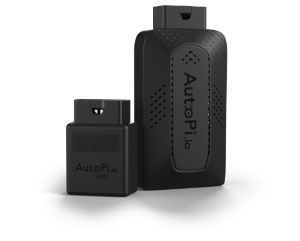What is an AOBRD? How Does It Stack Up Against the Current ELD Devices?
An Automatic On-Board Recording Device, or AOBRD, was an integral tool for tracking a driver's hours of service (HOS) in compliance with 49 CFR 395.15. Connecting directly to the engine of the vehicle, the AOBRD could log various data, providing crucial information for fleet managers. However, this AOBRD device is an older version of the modern Electronic Logging Device (ELD) and, as such, is no longer compliant following the ELD rule implemented on December 16th, 2019.
Navigating the AOBRD to ELD Transition: How Did the Change Occur?
The AOBRD, while functional, didn't have the capability to record or display as much data as an ELD device. It didn't address the format for the transfer of driver's logs, nor did it automatically record driving status or display log edit history. These limitations are stark when compared to the ELD mandate's requirements.
Why are ELD Devices Essential for Today's Fleet Management?
In contrast, an ELD provides detailed electronic logging, offering a far superior level of accuracy and HOS compliance. The ELD rule mandates that this device must be able to transfer ELD data via telematics or local services, automatically record the driving status once the vehicle starts moving, and display log edit history. It must also provide a way for the driver to review, edit and annotate their ELD record. Special driving categories like Yard Move or Personal Conveyance require permission from the carrier on the support system.
ELD Compliance: What are the Effects on Motor Carriers and Truck Drivers?
Motor carriers had to transition from using AOBRDs to ELDs for GPS fleet tracking due to the ELD mandate. This ELD compliance has driven the evolution of duty status recording, impacting commercial motor vehicle drivers and the management of truck driver's logs. The changes were far-reaching, with trucking companies now operating with compliant ELDs and phased out AOBRDs. This change ensures registered ELDs are used, which offer precise electronic logging for accurate engine hours and driving time tracking.
AOBRD vs. ELD: Which Offers More Accurate Duty Status and Tracking?
The main distinguishing factor between AOBRDs (Automatic On-Board Recording Devices) and ELDs (Electronic Logging Devices) lies in the complexity and granularity of the data recorded. Both are tools for recording a driver's duty status, however, they differ significantly in their functionality and compliance under FMCSA regulations.
AOBRDs, a predecessor of ELDs, offered basic tracking capabilities such as recording engine use, duty status, and hours of service (HOS). They do not, however, maintain a detailed log edit history and weren't mandated to automatically record driving status or specify the format for transferring driver's logs.
On the contrary, ELDs, the product of the ELD mandate, offer much more comprehensive tracking. They accurately track hours of service, and automatically record driving status once the vehicle starts moving. They display log edit history and allow the driver to review, edit, and annotate the ELD record. In addition to that, ELDs also must be capable of transferring ELD data via telematics or local services.
Furthermore, ELDs provide additional support for special driving categories such as Yard Move or Personal Conveyance, which wasn't a requirement for AOBRDs. The transition to ELDs since December 16, 2019, has made AOBRDs non-compliant.
Whether you're a fleet manager, truck driver, or fleet owner, the use of ELDs has become an essential part of fleet management and compliance, delivering greater accuracy, visibility, and control over drivers' duty status and fleet operations.
If you believe ELDs could enhance your fleet's compliance and operational efficiency, consider checking out solutions like the AutoPi TMU device, a fully registered ELD offering GPS fleet tracking, duty status change alerts, and compatibility with a variety of commercial motor vehicles.





